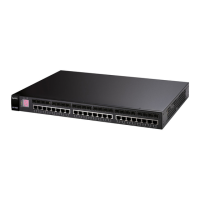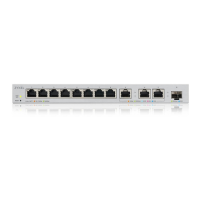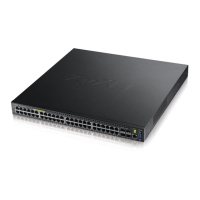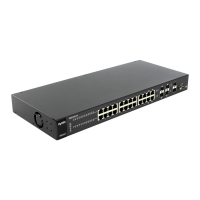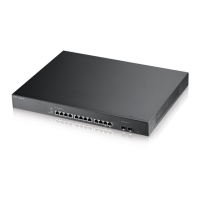Chapter 24 VLAN Stacking
XGS4600 Series User’s Guide
255
24.4.2 Selective Q-in-Q
Selective Q-in-Q is VLAN-based. It allows the Switch to add different outer VLAN tags to the incoming
frames received on one port according to their inner VLAN tags.
Note: Selective Q-in-Q rules are only applied to single-tagged frames received on the access
ports. If the incoming frames are untagged or single-tagged but received on a tunnel
port or cannot match any selective Q-in-Q rules, the Switch applies the port-based Q-
in-Q rules to them.
Click Selective QinQ in the Advanced Application > VLAN Stacking screen to display the screen as
shown.
Figure 197 Advanced Application > VLAN Stacking > Selective QinQ (Standalone Mode)
* Settings in this row apply to all ports.
Use this row only if you want to make some settings the same for all ports. Use this row first to set the
common settings and then make adjustments on a port-by-port basis.
Note: Changes in this row are copied to all the ports as soon as you make them.
SPVID SPVID is the service provider’s VLAN ID (the outer VLAN tag). Enter the service provider ID (from 1 to
4094) for frames received on this port.
Priority Select a priority level (from 0 to 7). This is the service provider’s priority level that adds to the frames
received on this port.
"0" is the lowest priority level and "7" is the highest.
Apply Click Apply to save your changes to the Switch’s run-time memory. The Switch loses these changes if it
is turned off or loses power, so use the Save link on the top navigation panel to save your changes to
the non-volatile memory when you are done configuring.
Cancel Click Cancel to begin configuring this screen afresh.
Table 98 Advanced Application > VLAN Stacking > Port-based QinQ (continued)
LABEL DESCRIPTION
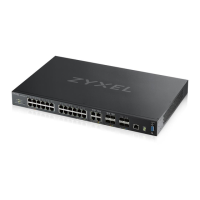
